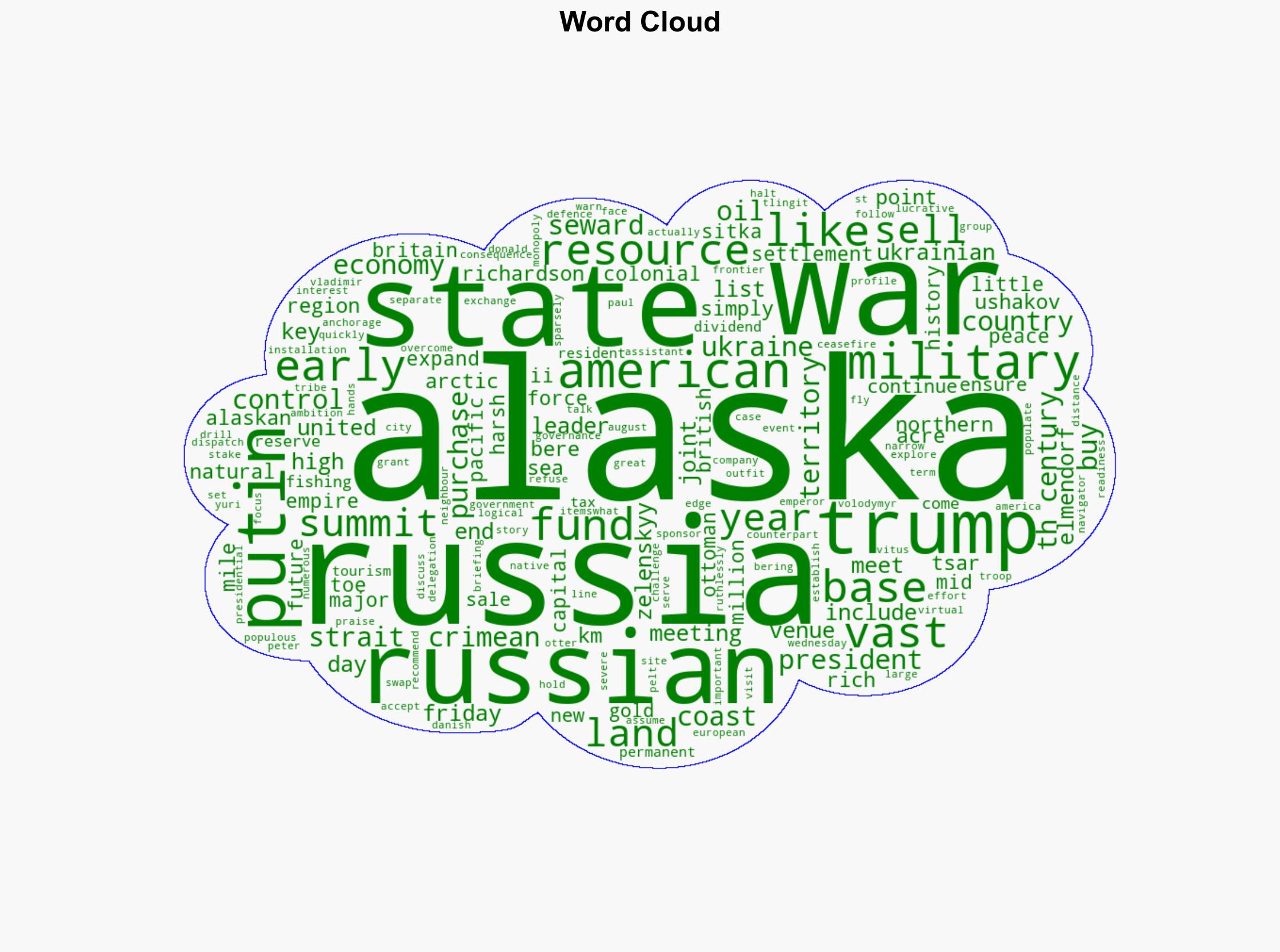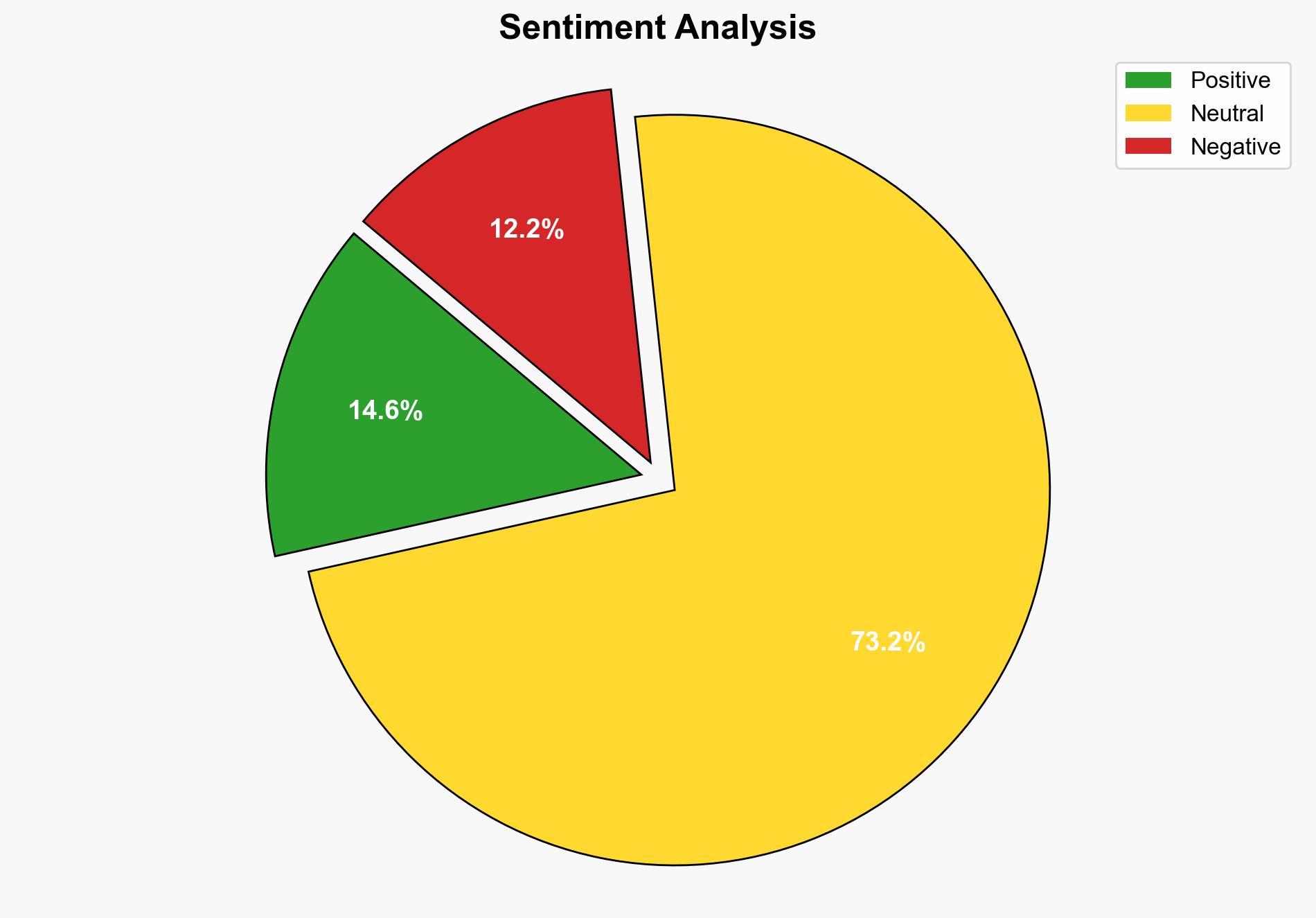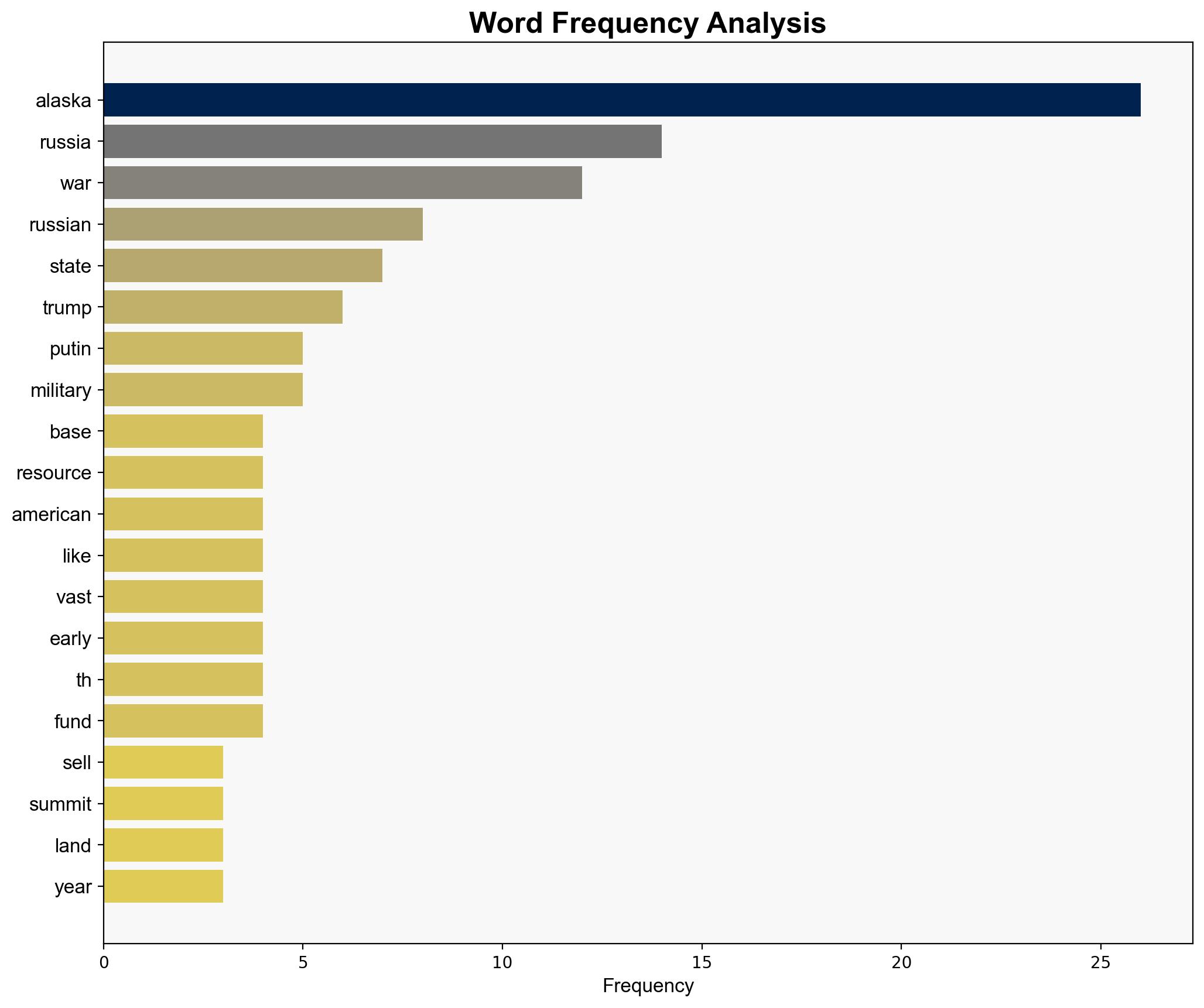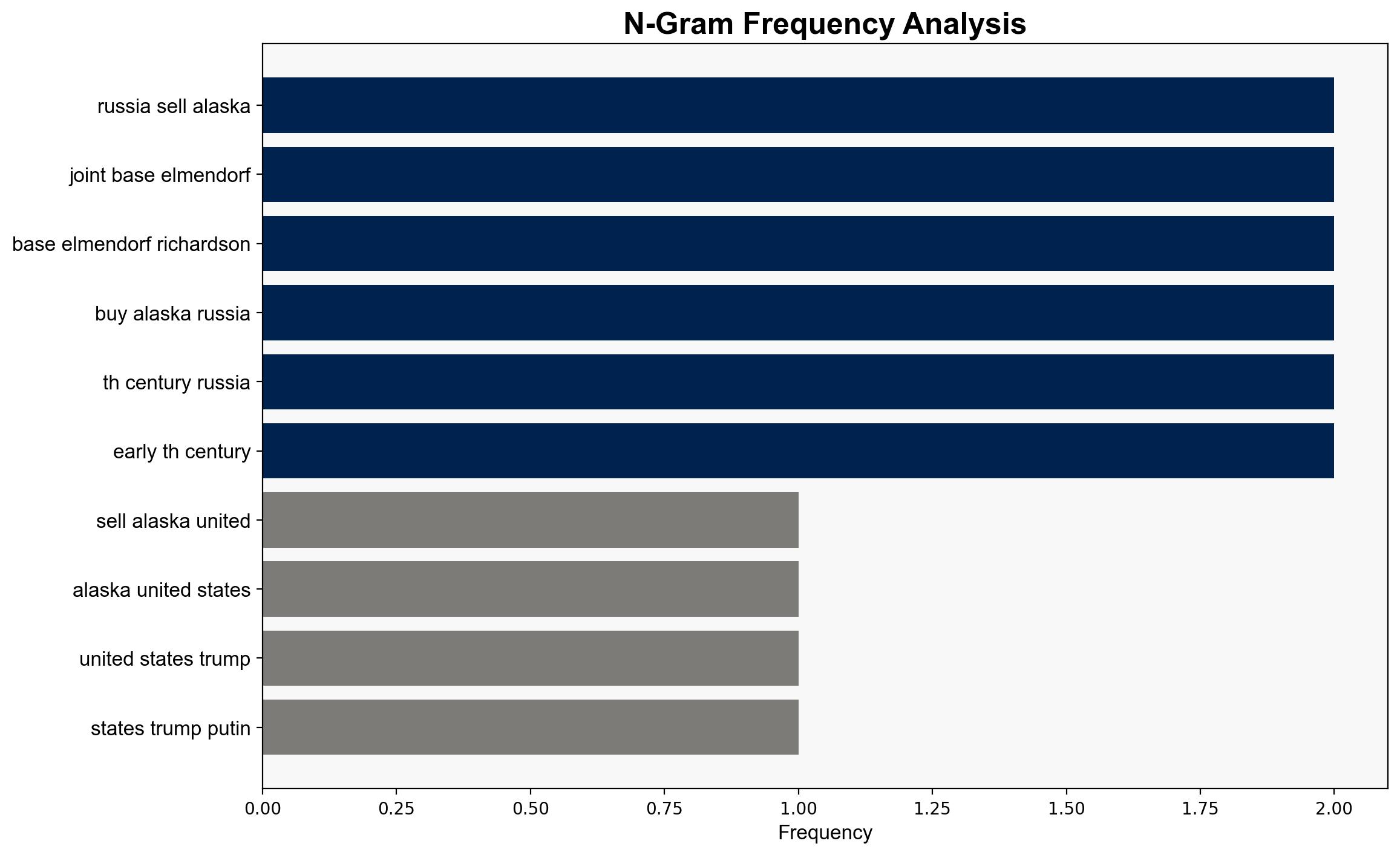Why did Russia sell Alaska to the United States – Al Jazeera English
Published on: 2025-08-15
Intelligence Report: Why did Russia sell Alaska to the United States – Al Jazeera English
1. BLUF (Bottom Line Up Front)
The analysis suggests that Russia’s sale of Alaska to the United States was primarily driven by financial necessity and strategic repositioning following the Crimean War. This hypothesis is supported by historical context and economic analysis. Confidence level is moderate due to potential gaps in historical records and geopolitical complexities. It is recommended to further investigate archival documents and economic data from the period to enhance understanding.
2. Competing Hypotheses
1. **Financial Necessity and Strategic Repositioning**: Russia sold Alaska to raise funds after the costly Crimean War and to avoid potential future conflicts with Britain over the territory.
2. **Geopolitical Maneuvering**: The sale was a strategic decision to strengthen ties with the United States, potentially as a counterbalance to British influence in North America.
Using ACH 2.0, the first hypothesis is better supported by historical records indicating Russia’s financial strain post-Crimean War and the minimal economic return from Alaska. The second hypothesis is less supported due to a lack of direct evidence of strategic alliances with the U.S. at that time.
3. Key Assumptions and Red Flags
– **Assumptions**: It is assumed that Russia’s financial condition was dire enough to necessitate the sale. Another assumption is that the geopolitical climate was a significant factor in the decision-making process.
– **Red Flags**: Limited access to Russian archives from the period may obscure full understanding. Potential bias in Western historical narratives could skew interpretation.
– **Blind Spots**: The role of internal Russian political dynamics and dissent regarding the sale is not fully explored.
4. Implications and Strategic Risks
The sale of Alaska had long-term implications for U.S.-Russia relations and territorial dynamics in North America. The transaction set a precedent for territorial negotiations influenced by financial and strategic pressures. Future risks include misinterpretation of historical events affecting current diplomatic relations.
5. Recommendations and Outlook
- Conduct a thorough review of Russian and American archival materials to validate financial and strategic motivations.
- Engage historians specializing in 19th-century geopolitics to provide deeper insights into the period’s diplomatic strategies.
- Scenario Projections:
- Best: Enhanced understanding leads to improved U.S.-Russia historical relations.
- Worst: Misinterpretations fuel current geopolitical tensions.
- Most Likely: Incremental improvements in historical clarity and diplomatic discourse.
6. Key Individuals and Entities
– Alexander II
– William Seward
– Vitus Bering
– Yuri Ushakov
7. Thematic Tags
national security threats, geopolitical strategy, historical analysis, U.S.-Russia relations





